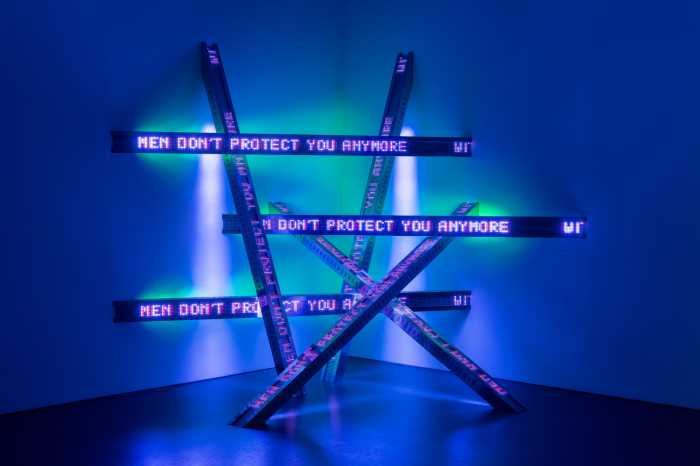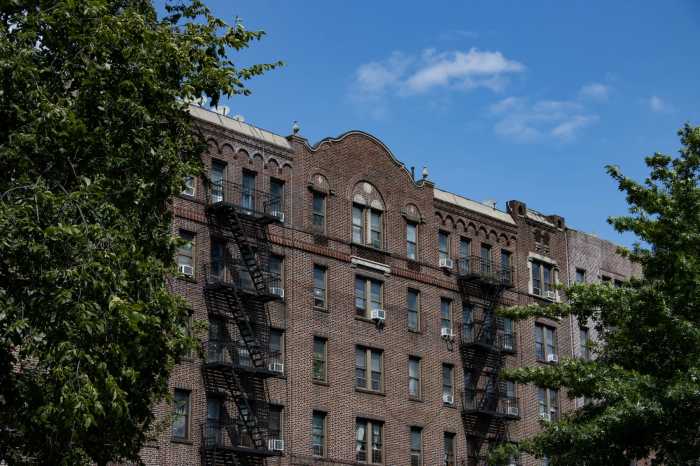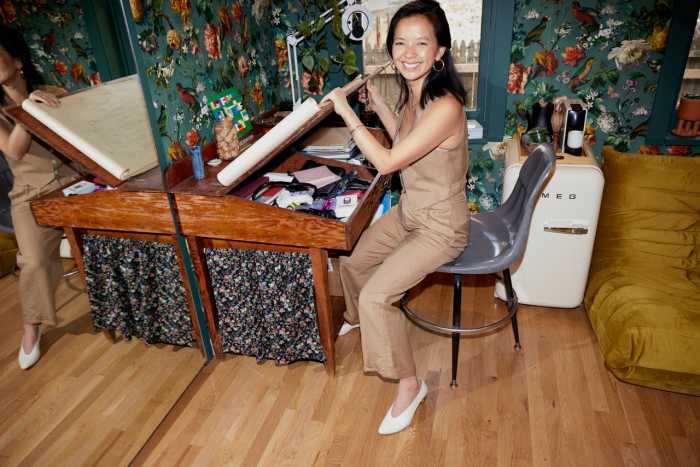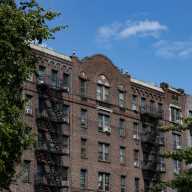Robert Scarano calls himself the architect of “the new Brooklyn,”
but the prolific master builder is facing charges that he falsified applications
for buildings that are larger than what is allowed under zoning codes.
At least 17 of Scarano’s 299 city projects were bigger than they
could be by law, according to charges filed by the Department of Buildings.
The charges center on one of Scarano’s trademark designs — a
double-high ceiling that allows for an airy mezzanine floor in each condo.
Scarano — who is one of many architects who are allowed to “self-certify”
their designs — labels such mezzanine space as “storage area”
on his blueprints and doesn’t add their square footage into the building’s
total floor-to-area ratio.
He says that city rules only count “living space” in its FAR
equation, so his mezzanines are exempt.
“We created that building type through the NYC Building Code,”
the architect told The Brooklyn Papers. “People never took advantage
of the fact that the building code allowed for very high ceilings and
a big footprint.”
City officials would not respond to Scarano’s comment, pending an
upcoming hearing. Should the DOB rule against Scarano, he will lose his
self-certification privilege.
Also hanging in the balance are Scarano’s designs for seven, 12-story
condo buildings on recently upzoned Fourth Avenue.
Scarano’s mezzanine design is a main feature of the so-called “Minerva”
building on Seventh Avenue and 23rd Street in Green-Wood Heights.
The 70-foot condo building earned its nickname because if it had been
built according to Scarano’s original design, it would have blocked
a historic view corridor between the Statue of Liberty and the Minerva
statue in Green-Wood Cemetery.
The design has since been scaled back to enable the statues to gaze upon
each other.
Scarano is not only in the public eye because his modern designs may have
run afoul of city zoning. He is simply unavoidable, thanks to the sheer
number of projects he juggles.
Since the early 1990s, 44 of his buildings have been completed —
including the 30-odd that dot Carroll Gardens, Cobble Hill, Prospect Heights,
Red Hook and the Park Slope area. More than 200 more are in various stages
of completion.
About 75 percent of his nearly 300 projects are in Kings County.
But his prolificacy has carried a huge price, activists and local officials
say.
Last summer, the DOB halted construction of a four-story, 55-foot South
Slope project after an 800-pound beam collapsed on a construction worker
and killed him.
A second construction worker, Anthony Duncan, died in March when a garage
wall designed and inspected by the architect collapsed — and Duncan
family lawyer Joseph Tacopina blames Scarano.
The architect works out of one of Brooklyn’s most-recognizable buildings,
110 York St., the eye-catching structure with the exposed iron beams that
mirror the trusses of the adjacent Manhattan Bridge.
His firm handled the addition to the old brick warehouse. In the evening,
Scarano flicks a switch and lights the stylish top, a beacon to anyone
crossing from Manhattan back to the promised land of Downtown Brooklyn.
Scarano blames his current troubles on chatty rivals who urged the city
to investigate him as a way of slowing him down.
“Not to sound egotistical, but it’s jealously,” he said.
“We put a lot into our jobs. We’ve changed the face of what
Brooklyn buildings look like. With change comes resistance.”.























